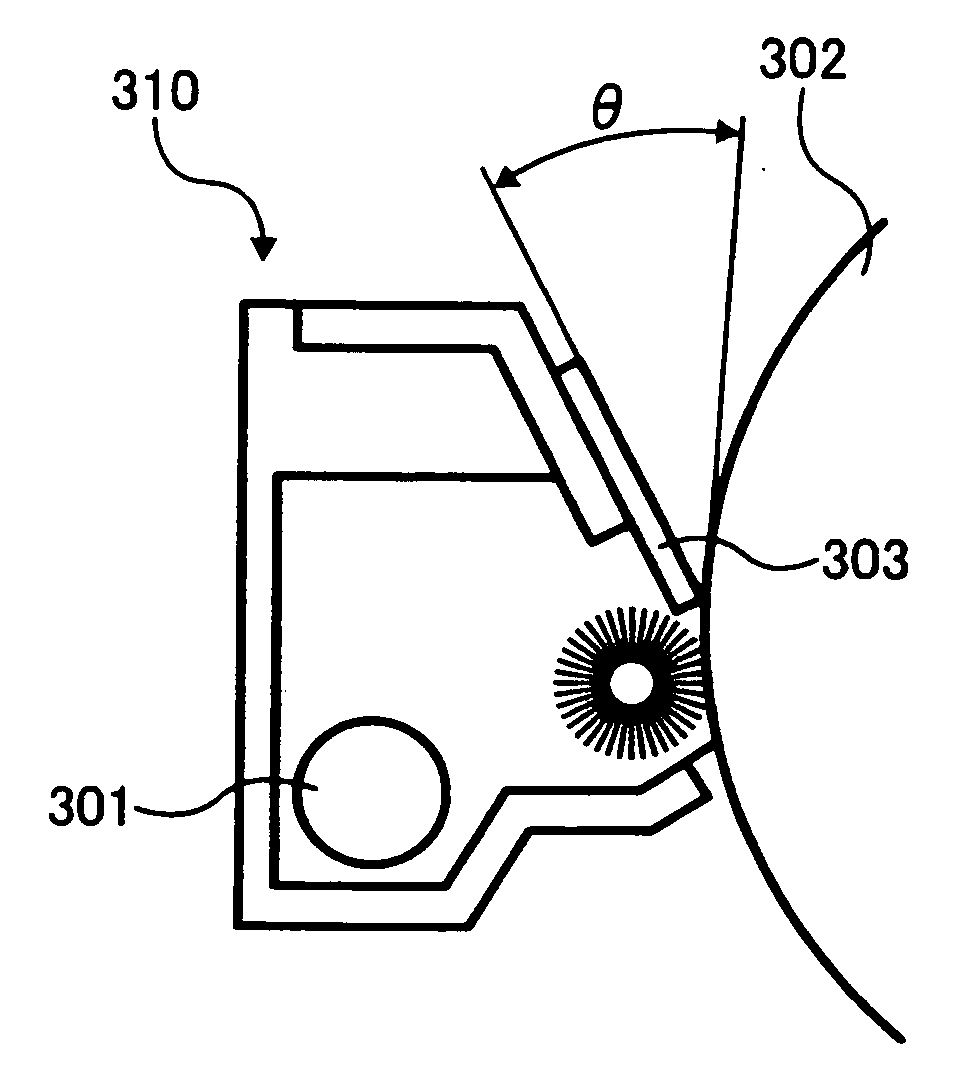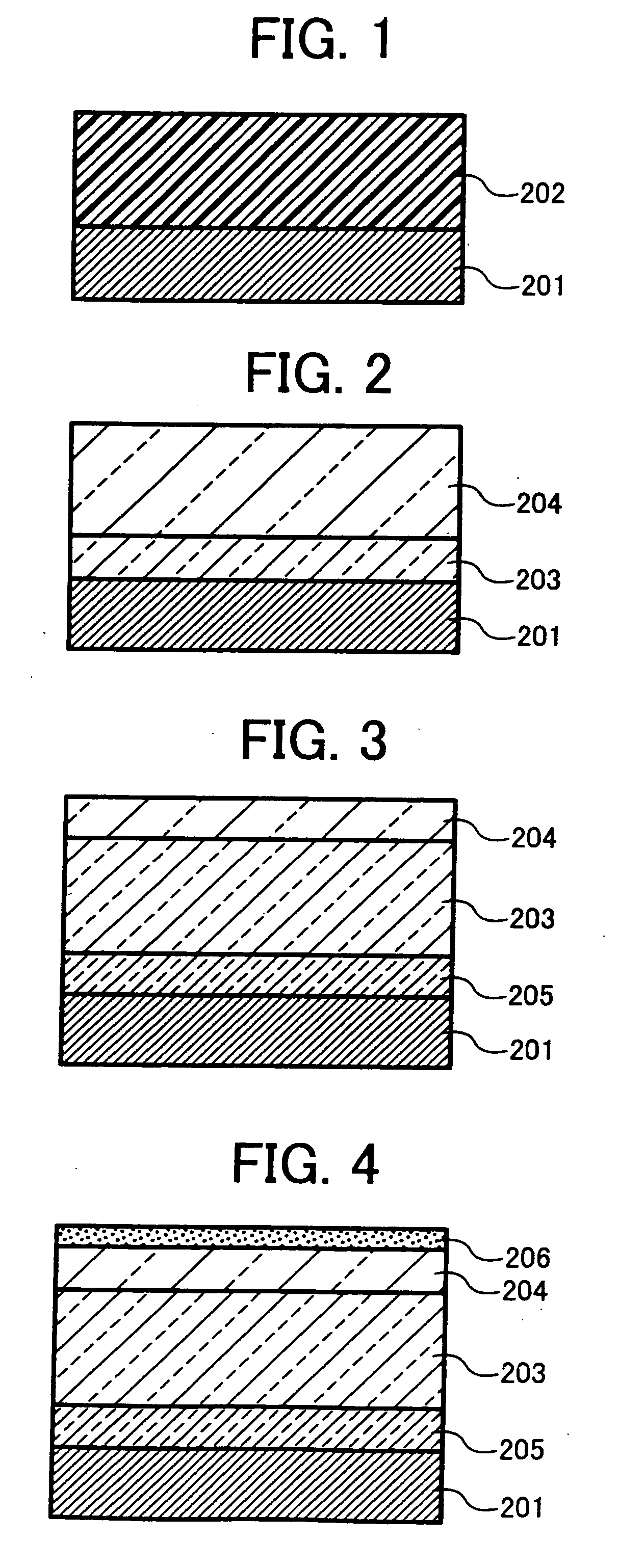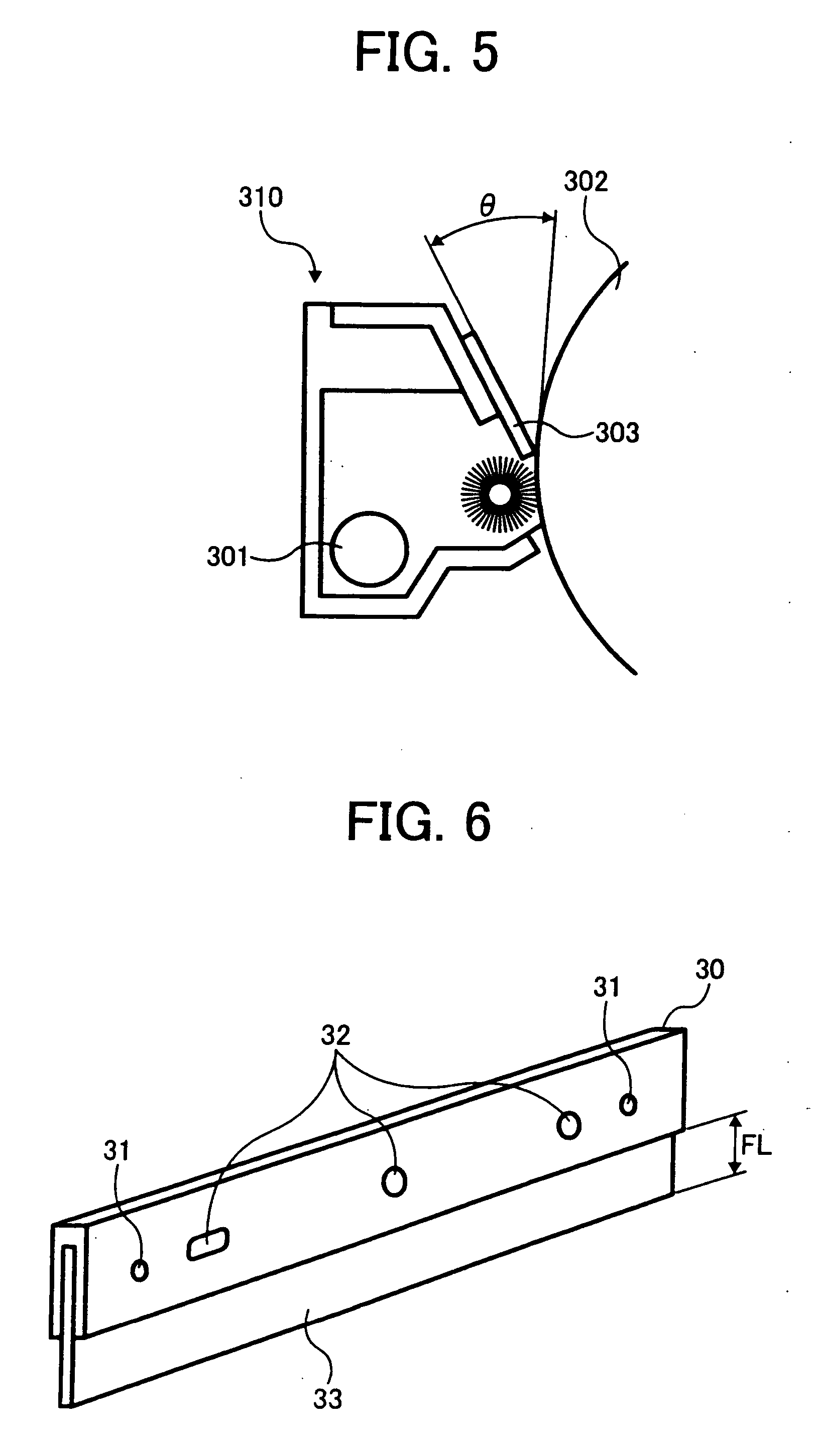Image forming apparatus, image forming method and process cartridge
a technology process cartridge, which is applied in the direction of electrographic process apparatus, instruments, optics, etc., can solve the problems of inconvenient cleaning system of blades, increase in power consumption of image forming apparatus, shortening of life, etc., and achieves long durability and good cleaning performance.
- Summary
- Abstract
- Description
- Claims
- Application Information
AI Technical Summary
Benefits of technology
Problems solved by technology
Method used
Image
Examples
manufacturing example 1
Manufacturing of Image Bearing Member 1
[0295] The following liquid application for an undercoating layer, for a charge generating layer and for a charge transport layer are applied to an aluminum cylinder having a diameter of 30 mm in this order by a dip coating method. Subsequent to drying, Image bearing member 1 is obtained, which has an undercoating layer having a thickness of 3.5 μm, a charge generating layer having a thickness of 0.2 μm and a charge transport layer having a thickness of 27 μm.
Liquid Application for Undercoating LayerTitanium dioxide powder400 partsMelamine resin 65 partsAlkyd resin120 parts2-butanone400 parts
[0296]
Liquid Application for Charge Generating LayerBisazo pigment represented by the following chemical structureChemical structure 112partsPolyvinylbutyral5parts2-butanone200partscyclohexanone400parts
[0297]
Liquid Application for Charge Transport LayerPolycarbonate (Z Polica, manufacturedby Teijin Chemicals Ltd.)Charge Transport Layer Represented by th...
manufacturing example 2
Manufacturing of Image Bearing Member 2
[0298] The liquid application prepared as described in Manufacturing Example 1, for an undercoating layer, for a charge generating layer and for a charge transport layer are applied to an aluminum cylinder having a diameter of 30 mm in this order by a dip coating method. Subsequent to drying, an undercoating layer having a thickness of 3.5 μm, a charge generating layer having a thickness of 0.2 μm and a charge transport layer having a thickness of 27 μm are obtained.
[0299] The following liquid application for a protective layer is applied to the charge transport layer by a spraying method (spraying gun: PieceCom PC308 with an air pressure of 2 kgf / cm2, manufactured by Olympos Co., Ltd.). Subsequent to drying at 150° C. for 60 minutes, Image bearing member 2 having a protective layer having a thickness of 5 μm is obtained.
Preparation of Liquid Application for Protective Layer
[0300] The solution having the following components are placed in...
manufacturing example 3
Manufacturing of Image Bearing Member 3
[0301] Image bearing member 3 is manufactured in the same manner as in Manufacturing Example 1 except that a protective layer is formed using the following liquid application for a protective layer.
Liquid of Application for Protective LayerPFA resin particles (MPE-056, manufactured by Du pont3.5partsMitsui Fluorochemical Co., Ltd.Dispersion helper (Modiper F210, manufactured by NOF0.35partsCorporation)Polycarbonate (Z Polica, manufactured by Teijin Chemicals6.15partsLtd.)Tetrahydrofuran200partsCyclohexanone60parts
PUM
| Property | Measurement | Unit |
|---|---|---|
| Length | aaaaa | aaaaa |
| Fraction | aaaaa | aaaaa |
| Linear density | aaaaa | aaaaa |
Abstract
Description
Claims
Application Information
 Login to View More
Login to View More - R&D
- Intellectual Property
- Life Sciences
- Materials
- Tech Scout
- Unparalleled Data Quality
- Higher Quality Content
- 60% Fewer Hallucinations
Browse by: Latest US Patents, China's latest patents, Technical Efficacy Thesaurus, Application Domain, Technology Topic, Popular Technical Reports.
© 2025 PatSnap. All rights reserved.Legal|Privacy policy|Modern Slavery Act Transparency Statement|Sitemap|About US| Contact US: help@patsnap.com



